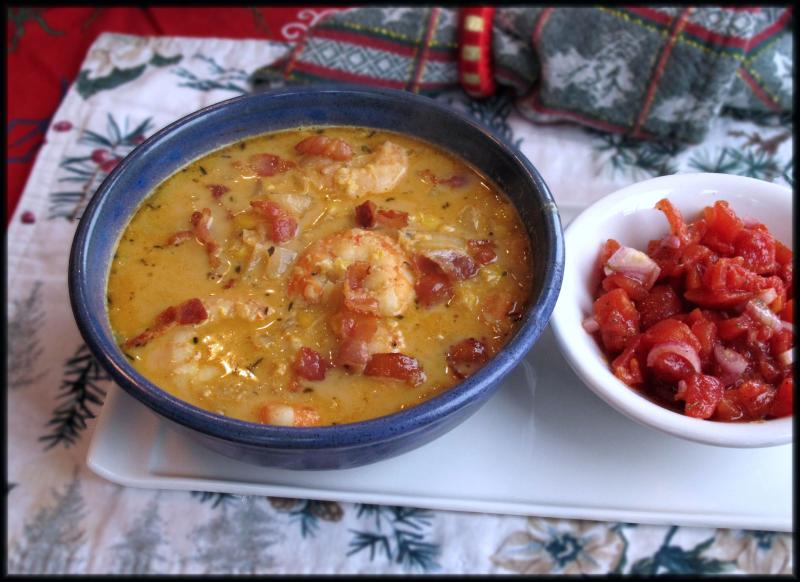Can’t go wrong with soup in cold weather
The recent spate of below-freezing temperatures has me craving soup: steaming-hot bowls of rich flavor and interesting texture from a wide range of ingredients. This is likely a connection to our ancestors' earliest food, as the history of soup is considered the history of cooking.
Whether the meal was for hunters or gatherers, nomads or settlers in permanent communities, combining a liquid with meat, fish, grains or vegetables in a large pot over a fire was simple to prepare, serve and consume. Across the globe, each culture developed a signature soup with their mixture of local and available ingredients.
The first version of soup was similar to the watery gruel Oliver Twist had in the poorhouse, famously asking, "Please, sir, I want some more." To make this, the cook would grind roasted grains or legumes into a paste and stir it into water. The word soup comes from the bread or "sop" over which the gruel was poured.
Today, soup can refer to any number of very specific dishes, from clear consommés and broths to heartier stocks and chunky chowders. The range of recipes is virtually endless. The most basic form of soup is bouillon: a combination of bones, vegetables and herbs simmered in water to create a deeply flavored liquid. From there, you can transform the liquid to consommé by pouring it through egg whites to collect excess fat and solids. Alternatively, continued simmering to further concentrate the flavors and reduce the liquid will result in stock. Thickening the stock with flour, butter and milk will give you a creamy bisque.
While consommés, broths and bisques are often served alone, stock is typically used as an ingredient in other dishes. Examples of these include vegetable soups, noodle or pasta soups, sauces, gravies, and meat or fish stews. And, one of the most fiercely debated of all fish soups is the one we call chowder.
Chowders come in three styles: chunky white, briny and clear, or tomato-based. The name chowder comes from the Latin "calderia" for cooking pot, which evolved to the French chaudière, also the root of our word cauldron. Food historians trace the source of chowder to seafaring villages along both sides of the English Channel. Breton fishermen brought the custom to Newfoundland, Nova Scotia and into New England.
Chowder, as it is known today, originated as a shipboard dish made from chunks of seafood seasoned with salt pork and thickened with hardtack. While the definition of chowder refers to its main ingredient (clams or fish) not every chowder resembles the well-known creamy, white New England clam chowder. You'll also find spicy, red Manhattan Clam Chowder and delicate Connecticut or Rhode Island Clam Chowder with a clear, clam-juice broth.
I've included a recipe for the shrimp and corn chowder in the photo. This New England - Manhattan hybrid doesn't include potatoes, but does feature chopped tomatoes and some juice, giving it a reddish-gold color. The Rhode Island - Connecticut-style chowder calls for quahogs, which can be found chopped and frozen, if you'd prefer not to steam them at home.
Here's wishing you a happy, healthy 2018 – stay warm and eat soup!
Shrimp & Corn Chowder
5 chopped bacon slices
1 lb peeled shrimp
1 C chopped onion
1 T minced garlic
1 t paprika
1/2 t thyme
2 C frozen corn kernels
1/2 C chopped tomato
3 C chicken stock
1 C half & half
salt & pepper, to taste
Fry the bacon pieces until crispy in a Dutch oven over medium heat. Transfer to a plate lined with paper towels. Drain off all but 1 T of the fat. Add shrimp and cook until pink, stirring frequently, about 3 minutes. Remove shrimp with a slotted spoon and add to the plate with the bacon. Add onions and sauté until soft and translucent, about 3 minutes. Add garlic, paprika, crushed red pepper, thyme, salt and pepper; cook until fragrant, about 2 minutes. Add corn, tomato, chicken stock and half & half. Bring to a boil, then reduce heat to medium-low and simmer for 15 minutes. Using an immersion blender, blend about half of the soup until creamy. Season to taste with salt and pepper. To serve, divide shrimp into 4 soup bowls and ladle liquid over them. Garnish with bacon pieces. Yield: 4 servings.
Rhode Island Clam Chowder
6 oz diced salt pork
1 diced onion
3 diced celery stalks
1 sliced leek
4 C clam juice
2 C water
3 peeled & cubed potatoes
1 bay leaf
2 C chopped quahog clams
2 t chopped thyme
1/2 t Tabasco sauce
2 T lemon juice
pepper, to taste
chopped parsley
Render the fat from the salt pork in a large pot over medium heat. Drain off all but 1 T of the drippings; reserve any browned bits (cracklings). Stir in onion, celery, and leek; cook until softened, about 5 minutes. Add clam juice, water, potatoes, and bay leaf. Bring to a boil and simmer for 5 minutes. Reduce heat to low; add clams and fresh thyme. Cook until thickened, about 15 minutes. Remove from heat and discard bay leaf. Season with Tabasco, lemon juice, and pepper. Serve garnished with cracklings and parsley. Yield: 8 servings.























































